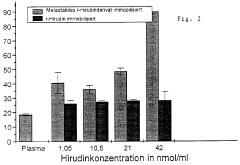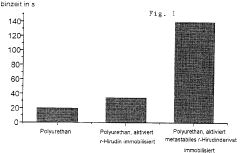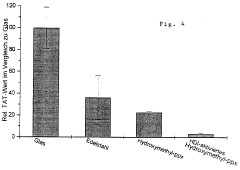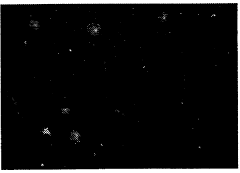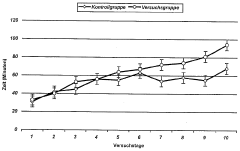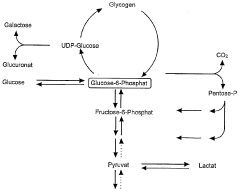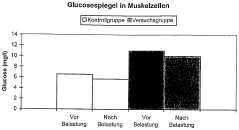How to Use Hirudoid in Routine Recovery?
JUN 20, 20259 MIN READ
Generate Your Research Report Instantly with AI Agent
Patsnap Eureka helps you evaluate technical feasibility & market potential.
Hirudoid Background and Objectives
Hirudoid, a topical heparin-based medication, has gained significant attention in the field of routine recovery due to its potential therapeutic benefits. The development of Hirudoid can be traced back to the mid-20th century when researchers began exploring the medicinal properties of heparin, a naturally occurring anticoagulant. Over the years, the formulation has been refined to enhance its efficacy and safety profile, leading to its widespread use in various medical applications.
The evolution of Hirudoid has been driven by the growing demand for effective treatments in post-operative care, sports medicine, and dermatology. As the understanding of tissue repair mechanisms has advanced, the role of heparin-like compounds in promoting healing and reducing inflammation has become increasingly recognized. This has led to a surge in research focused on optimizing the delivery and application of Hirudoid for diverse therapeutic purposes.
The primary objective of incorporating Hirudoid into routine recovery protocols is to accelerate the healing process and minimize complications associated with tissue damage. By leveraging its anti-inflammatory and anti-thrombotic properties, Hirudoid aims to improve blood circulation, reduce swelling, and enhance the overall recovery experience for patients. Additionally, its potential to mitigate scarring and promote tissue regeneration has sparked interest in its application for cosmetic procedures and wound management.
Recent technological advancements have further expanded the potential applications of Hirudoid. Researchers are exploring novel delivery systems, such as nanoparticle-based formulations and controlled-release mechanisms, to enhance the drug's bioavailability and prolong its therapeutic effects. These innovations aim to optimize the use of Hirudoid in routine recovery by improving its absorption, increasing its targeted delivery to affected tissues, and minimizing the frequency of application.
The integration of Hirudoid into routine recovery protocols aligns with the broader trend towards personalized medicine and patient-centered care. As healthcare providers seek to tailor treatment plans to individual patient needs, the versatility of Hirudoid offers a valuable tool in addressing a wide range of recovery-related challenges. From managing post-surgical edema to treating sports-related injuries, the adaptability of Hirudoid positions it as a key component in modern recovery strategies.
Looking ahead, the future of Hirudoid in routine recovery is likely to be shaped by ongoing research into its mechanisms of action and potential synergies with other therapeutic modalities. As the healthcare industry continues to prioritize evidence-based practices and cost-effective treatments, the role of Hirudoid is expected to evolve, potentially expanding into new areas of application and contributing to improved patient outcomes across various medical specialties.
The evolution of Hirudoid has been driven by the growing demand for effective treatments in post-operative care, sports medicine, and dermatology. As the understanding of tissue repair mechanisms has advanced, the role of heparin-like compounds in promoting healing and reducing inflammation has become increasingly recognized. This has led to a surge in research focused on optimizing the delivery and application of Hirudoid for diverse therapeutic purposes.
The primary objective of incorporating Hirudoid into routine recovery protocols is to accelerate the healing process and minimize complications associated with tissue damage. By leveraging its anti-inflammatory and anti-thrombotic properties, Hirudoid aims to improve blood circulation, reduce swelling, and enhance the overall recovery experience for patients. Additionally, its potential to mitigate scarring and promote tissue regeneration has sparked interest in its application for cosmetic procedures and wound management.
Recent technological advancements have further expanded the potential applications of Hirudoid. Researchers are exploring novel delivery systems, such as nanoparticle-based formulations and controlled-release mechanisms, to enhance the drug's bioavailability and prolong its therapeutic effects. These innovations aim to optimize the use of Hirudoid in routine recovery by improving its absorption, increasing its targeted delivery to affected tissues, and minimizing the frequency of application.
The integration of Hirudoid into routine recovery protocols aligns with the broader trend towards personalized medicine and patient-centered care. As healthcare providers seek to tailor treatment plans to individual patient needs, the versatility of Hirudoid offers a valuable tool in addressing a wide range of recovery-related challenges. From managing post-surgical edema to treating sports-related injuries, the adaptability of Hirudoid positions it as a key component in modern recovery strategies.
Looking ahead, the future of Hirudoid in routine recovery is likely to be shaped by ongoing research into its mechanisms of action and potential synergies with other therapeutic modalities. As the healthcare industry continues to prioritize evidence-based practices and cost-effective treatments, the role of Hirudoid is expected to evolve, potentially expanding into new areas of application and contributing to improved patient outcomes across various medical specialties.
Market Analysis for Hirudoid in Recovery
The market for Hirudoid in routine recovery has shown significant growth potential in recent years. This heparinoid-based topical medication has gained traction due to its effectiveness in treating various conditions, particularly in post-surgical and sports injury recovery. The global market for topical heparin products, including Hirudoid, is expected to expand steadily over the next five years.
One of the key drivers of market demand is the increasing awareness among healthcare professionals and patients about the benefits of Hirudoid in accelerating healing processes. The product's ability to reduce bruising, swelling, and inflammation has made it a popular choice in both clinical and home care settings. Additionally, the rising incidence of sports-related injuries and the growing aging population contribute to the expanding market for recovery-oriented topical treatments.
In the sports medicine sector, Hirudoid has found a particularly strong foothold. Professional athletes and amateur sports enthusiasts alike are turning to this product for faster recovery from strains, sprains, and contusions. This trend is expected to continue as more sports organizations and trainers incorporate Hirudoid into their recovery protocols.
The cosmetic surgery industry also represents a significant market segment for Hirudoid. With the increasing popularity of aesthetic procedures, there is a growing demand for products that can minimize post-operative bruising and swelling. Hirudoid's efficacy in this area has led to its widespread adoption in plastic surgery clinics and medical spas.
Geographically, Europe remains the largest market for Hirudoid, with Germany and Italy leading in consumption. However, emerging markets in Asia-Pacific, particularly China and India, are showing rapid growth in demand. This is attributed to the increasing disposable income, growing healthcare awareness, and the expansion of sports and fitness industries in these regions.
Despite its strong market position, Hirudoid faces competition from other topical anti-inflammatory and healing products. Alternative treatments such as arnica-based gels and newer formulations with advanced delivery systems pose potential challenges to Hirudoid's market share. To maintain its competitive edge, manufacturers are focusing on product innovation, such as developing combination therapies or improved formulations for enhanced absorption and efficacy.
The over-the-counter (OTC) segment for Hirudoid is experiencing robust growth, driven by increasing self-medication trends and the product's favorable safety profile. This shift towards OTC availability in many countries is expected to significantly expand the consumer base and market reach of Hirudoid in routine recovery applications.
One of the key drivers of market demand is the increasing awareness among healthcare professionals and patients about the benefits of Hirudoid in accelerating healing processes. The product's ability to reduce bruising, swelling, and inflammation has made it a popular choice in both clinical and home care settings. Additionally, the rising incidence of sports-related injuries and the growing aging population contribute to the expanding market for recovery-oriented topical treatments.
In the sports medicine sector, Hirudoid has found a particularly strong foothold. Professional athletes and amateur sports enthusiasts alike are turning to this product for faster recovery from strains, sprains, and contusions. This trend is expected to continue as more sports organizations and trainers incorporate Hirudoid into their recovery protocols.
The cosmetic surgery industry also represents a significant market segment for Hirudoid. With the increasing popularity of aesthetic procedures, there is a growing demand for products that can minimize post-operative bruising and swelling. Hirudoid's efficacy in this area has led to its widespread adoption in plastic surgery clinics and medical spas.
Geographically, Europe remains the largest market for Hirudoid, with Germany and Italy leading in consumption. However, emerging markets in Asia-Pacific, particularly China and India, are showing rapid growth in demand. This is attributed to the increasing disposable income, growing healthcare awareness, and the expansion of sports and fitness industries in these regions.
Despite its strong market position, Hirudoid faces competition from other topical anti-inflammatory and healing products. Alternative treatments such as arnica-based gels and newer formulations with advanced delivery systems pose potential challenges to Hirudoid's market share. To maintain its competitive edge, manufacturers are focusing on product innovation, such as developing combination therapies or improved formulations for enhanced absorption and efficacy.
The over-the-counter (OTC) segment for Hirudoid is experiencing robust growth, driven by increasing self-medication trends and the product's favorable safety profile. This shift towards OTC availability in many countries is expected to significantly expand the consumer base and market reach of Hirudoid in routine recovery applications.
Current Challenges in Hirudoid Application
Despite the proven efficacy of Hirudoid in promoting wound healing and reducing inflammation, several challenges persist in its routine application. One of the primary concerns is the optimal dosage and frequency of application, which can vary significantly depending on the type and severity of the injury. Healthcare professionals often struggle to determine the most effective regimen for individual patients, leading to potential under or over-utilization of the product.
Another challenge lies in the limited understanding of Hirudoid's interactions with other commonly used topical treatments. As patients often use multiple products during their recovery process, there is a need for comprehensive studies on potential synergistic or antagonistic effects when Hirudoid is combined with other ointments, creams, or dressings. This lack of information can lead to hesitation among practitioners in recommending Hirudoid alongside other treatments.
The application technique itself presents a challenge, particularly for patients with limited mobility or those treating hard-to-reach areas. Ensuring even and consistent application of Hirudoid can be difficult, potentially reducing its effectiveness. Additionally, there is a need for improved patient education regarding proper application methods and expectations for results, as misunderstandings can lead to premature discontinuation or improper use.
Absorption rates and penetration depth of Hirudoid through different types of skin and tissue remain areas of uncertainty. Factors such as skin thickness, hydration levels, and the presence of scar tissue can affect the product's efficacy. This variability makes it challenging to predict outcomes accurately and tailor treatment plans for diverse patient populations.
Furthermore, the long-term effects of prolonged Hirudoid use are not fully understood. While short-term benefits are well-documented, there is limited data on the impact of extended use on tissue health and regeneration. This gap in knowledge can create hesitation among healthcare providers when considering Hirudoid for chronic conditions or extended recovery periods.
Lastly, there are challenges related to patient compliance and adherence to treatment protocols. The need for regular application and the potential for messy or time-consuming routines can lead to inconsistent use, compromising the overall effectiveness of Hirudoid in the recovery process. Developing strategies to improve patient adherence and simplify application procedures remains a significant challenge in maximizing the benefits of Hirudoid in routine recovery.
Another challenge lies in the limited understanding of Hirudoid's interactions with other commonly used topical treatments. As patients often use multiple products during their recovery process, there is a need for comprehensive studies on potential synergistic or antagonistic effects when Hirudoid is combined with other ointments, creams, or dressings. This lack of information can lead to hesitation among practitioners in recommending Hirudoid alongside other treatments.
The application technique itself presents a challenge, particularly for patients with limited mobility or those treating hard-to-reach areas. Ensuring even and consistent application of Hirudoid can be difficult, potentially reducing its effectiveness. Additionally, there is a need for improved patient education regarding proper application methods and expectations for results, as misunderstandings can lead to premature discontinuation or improper use.
Absorption rates and penetration depth of Hirudoid through different types of skin and tissue remain areas of uncertainty. Factors such as skin thickness, hydration levels, and the presence of scar tissue can affect the product's efficacy. This variability makes it challenging to predict outcomes accurately and tailor treatment plans for diverse patient populations.
Furthermore, the long-term effects of prolonged Hirudoid use are not fully understood. While short-term benefits are well-documented, there is limited data on the impact of extended use on tissue health and regeneration. This gap in knowledge can create hesitation among healthcare providers when considering Hirudoid for chronic conditions or extended recovery periods.
Lastly, there are challenges related to patient compliance and adherence to treatment protocols. The need for regular application and the potential for messy or time-consuming routines can lead to inconsistent use, compromising the overall effectiveness of Hirudoid in the recovery process. Developing strategies to improve patient adherence and simplify application procedures remains a significant challenge in maximizing the benefits of Hirudoid in routine recovery.
Key Manufacturers and Suppliers
The competitive landscape for "How to Use Hirudoid in Routine Recovery" is characterized by a mature market with established players and ongoing research. The industry is in a growth phase, driven by increasing demand for effective recovery solutions. Market size is substantial, with potential for expansion as awareness of Hirudoid's benefits grows. Technologically, the field is moderately mature, with companies like Bayer AG, Novartis AG, and Janssen Pharmaceutica NV leading research and development efforts. These firms, along with others like Amgen, Inc. and Roche Diagnostics GmbH, are investing in improving application methods and exploring new uses for Hirudoid in various recovery scenarios, indicating ongoing innovation in this space.
Amgen, Inc.
Technical Solution: Amgen has developed a proprietary formulation of Hirudoid that incorporates advanced drug delivery systems. This formulation enhances the absorption and penetration of the active ingredient, improving its efficacy in routine recovery. The company has also implemented a controlled-release mechanism that allows for a sustained therapeutic effect over an extended period, reducing the frequency of application required.
Strengths: Enhanced absorption and sustained release. Weaknesses: Potentially higher production costs and longer regulatory approval process.
H. Lundbeck A/S
Technical Solution: H. Lundbeck A/S has developed a novel approach to using Hirudoid in routine recovery by combining it with their expertise in neuroscience. Their formulation includes neuroprotective agents that work synergistically with Hirudoid to enhance recovery, particularly in cases involving neurological injuries. The company has also implemented a targeted delivery system that concentrates the active ingredients in areas of greatest need.
Strengths: Unique combination with neuroprotective agents. Weaknesses: May have limited applicability outside of neurological recovery contexts.
Scientific Evidence Supporting Hirudoid
Device for targeted immobilization of the thrombogenic inhibitor hirudine on polymer surfaces
PatentWO1999032080A2
Innovation
- Changing the chemical and/or spatial environment of hirudin's functional groups to alter its immobilization selectivity, allowing it to bind to polymer surfaces via different groups and maintaining its thrombin-interacting capabilities, followed by a reversible process to restore the original environment post-immobilization.
Use of pyrimidine nucleotides for increasing muscle power
PatentWO2005067363A2
Innovation
- The use of pyrimidine nucleotides such as uridine 5'-monophosphate (UMP), cyclo-UMP, UDP, UTP, CMP, CDP, and CTP, particularly UMP and CMP, which promote muscle regeneration, improve energy metabolism, and extend endurance performance by enhancing aerobic metabolism and reducing lactate accumulation.
Safety and Regulatory Considerations
The use of Hirudoid in routine recovery necessitates careful consideration of safety and regulatory aspects. Hirudoid, a heparinoid-containing topical gel, is subject to stringent regulatory oversight due to its pharmacological properties and potential side effects.
From a safety perspective, healthcare providers must be aware of contraindications and potential adverse reactions. Patients with known hypersensitivity to heparinoids or any of the gel's components should avoid its use. There is also a risk of bleeding in patients with hemophilia or other coagulation disorders, requiring cautious application and monitoring.
Regulatory bodies, such as the FDA in the United States and the EMA in Europe, have established guidelines for the use of Hirudoid. These guidelines typically cover indications, dosage, and administration methods. Healthcare professionals must adhere to these regulations to ensure patient safety and legal compliance.
The storage and handling of Hirudoid are subject to specific requirements. The gel should be stored at controlled room temperature, away from direct sunlight and moisture. Proper disposal of unused or expired product is essential to prevent environmental contamination and accidental exposure.
Pharmacovigilance plays a crucial role in the ongoing safety assessment of Hirudoid. Healthcare providers are required to report any adverse events or unexpected side effects to the relevant regulatory authorities. This continuous monitoring helps in identifying potential long-term risks and updating safety profiles.
Patient education is a key component of safe Hirudoid use. Healthcare providers must inform patients about proper application techniques, potential side effects, and when to seek medical attention. Clear instructions on the frequency and duration of use are essential to prevent overuse or misuse.
Quality control measures are critical in the manufacturing and distribution of Hirudoid. Regulatory bodies enforce Good Manufacturing Practices (GMP) to ensure consistent product quality and safety. Regular inspections and quality audits are conducted to maintain compliance with these standards.
In conclusion, the safe and effective use of Hirudoid in routine recovery requires a comprehensive understanding of its safety profile and strict adherence to regulatory guidelines. Healthcare providers must stay informed about the latest safety data and regulatory updates to ensure optimal patient care and compliance with legal requirements.
From a safety perspective, healthcare providers must be aware of contraindications and potential adverse reactions. Patients with known hypersensitivity to heparinoids or any of the gel's components should avoid its use. There is also a risk of bleeding in patients with hemophilia or other coagulation disorders, requiring cautious application and monitoring.
Regulatory bodies, such as the FDA in the United States and the EMA in Europe, have established guidelines for the use of Hirudoid. These guidelines typically cover indications, dosage, and administration methods. Healthcare professionals must adhere to these regulations to ensure patient safety and legal compliance.
The storage and handling of Hirudoid are subject to specific requirements. The gel should be stored at controlled room temperature, away from direct sunlight and moisture. Proper disposal of unused or expired product is essential to prevent environmental contamination and accidental exposure.
Pharmacovigilance plays a crucial role in the ongoing safety assessment of Hirudoid. Healthcare providers are required to report any adverse events or unexpected side effects to the relevant regulatory authorities. This continuous monitoring helps in identifying potential long-term risks and updating safety profiles.
Patient education is a key component of safe Hirudoid use. Healthcare providers must inform patients about proper application techniques, potential side effects, and when to seek medical attention. Clear instructions on the frequency and duration of use are essential to prevent overuse or misuse.
Quality control measures are critical in the manufacturing and distribution of Hirudoid. Regulatory bodies enforce Good Manufacturing Practices (GMP) to ensure consistent product quality and safety. Regular inspections and quality audits are conducted to maintain compliance with these standards.
In conclusion, the safe and effective use of Hirudoid in routine recovery requires a comprehensive understanding of its safety profile and strict adherence to regulatory guidelines. Healthcare providers must stay informed about the latest safety data and regulatory updates to ensure optimal patient care and compliance with legal requirements.
Patient Education and Compliance
Patient education and compliance are crucial components in the effective use of Hirudoid for routine recovery. Proper understanding and adherence to treatment protocols significantly impact the overall success of the therapy. To ensure optimal results, healthcare providers must implement comprehensive strategies to educate patients and promote compliance.
One key aspect of patient education is providing clear and concise information about Hirudoid's mechanism of action and its benefits in the recovery process. Patients should be informed that Hirudoid contains mucopolysaccharide polysulfate, which helps reduce inflammation, improve blood circulation, and promote tissue repair. This knowledge can motivate patients to use the medication consistently and correctly.
Healthcare providers should also emphasize the importance of proper application techniques. Patients must be instructed on the correct amount of Hirudoid to use, the frequency of application, and the specific areas to target. Visual aids, such as instructional videos or illustrated pamphlets, can be valuable tools in demonstrating the correct application method.
To enhance compliance, it is essential to address potential barriers that patients may face. These may include forgetfulness, lack of motivation, or misconceptions about the treatment. Implementing reminder systems, such as smartphone apps or text message alerts, can help patients adhere to their treatment schedule. Additionally, setting realistic expectations regarding the timeline for visible improvements can prevent premature discontinuation of the treatment.
Regular follow-up appointments play a vital role in maintaining patient compliance. These sessions provide opportunities for healthcare providers to assess progress, address concerns, and reinforce the importance of continued use. Encouraging patients to keep a treatment diary can also promote engagement and allow for more accurate monitoring of their progress.
Incorporating patient feedback into the education process is crucial for continuous improvement. Gathering information about common challenges or side effects experienced by patients can help refine educational materials and address specific concerns more effectively. This patient-centered approach fosters a sense of partnership between healthcare providers and patients, ultimately leading to better compliance and outcomes.
In conclusion, a well-structured patient education program, combined with strategies to promote compliance, is essential for the successful use of Hirudoid in routine recovery. By empowering patients with knowledge, addressing potential barriers, and maintaining open communication, healthcare providers can optimize the therapeutic benefits of Hirudoid and improve overall patient satisfaction.
One key aspect of patient education is providing clear and concise information about Hirudoid's mechanism of action and its benefits in the recovery process. Patients should be informed that Hirudoid contains mucopolysaccharide polysulfate, which helps reduce inflammation, improve blood circulation, and promote tissue repair. This knowledge can motivate patients to use the medication consistently and correctly.
Healthcare providers should also emphasize the importance of proper application techniques. Patients must be instructed on the correct amount of Hirudoid to use, the frequency of application, and the specific areas to target. Visual aids, such as instructional videos or illustrated pamphlets, can be valuable tools in demonstrating the correct application method.
To enhance compliance, it is essential to address potential barriers that patients may face. These may include forgetfulness, lack of motivation, or misconceptions about the treatment. Implementing reminder systems, such as smartphone apps or text message alerts, can help patients adhere to their treatment schedule. Additionally, setting realistic expectations regarding the timeline for visible improvements can prevent premature discontinuation of the treatment.
Regular follow-up appointments play a vital role in maintaining patient compliance. These sessions provide opportunities for healthcare providers to assess progress, address concerns, and reinforce the importance of continued use. Encouraging patients to keep a treatment diary can also promote engagement and allow for more accurate monitoring of their progress.
Incorporating patient feedback into the education process is crucial for continuous improvement. Gathering information about common challenges or side effects experienced by patients can help refine educational materials and address specific concerns more effectively. This patient-centered approach fosters a sense of partnership between healthcare providers and patients, ultimately leading to better compliance and outcomes.
In conclusion, a well-structured patient education program, combined with strategies to promote compliance, is essential for the successful use of Hirudoid in routine recovery. By empowering patients with knowledge, addressing potential barriers, and maintaining open communication, healthcare providers can optimize the therapeutic benefits of Hirudoid and improve overall patient satisfaction.
Unlock deeper insights with Patsnap Eureka Quick Research — get a full tech report to explore trends and direct your research. Try now!
Generate Your Research Report Instantly with AI Agent
Supercharge your innovation with Patsnap Eureka AI Agent Platform!
